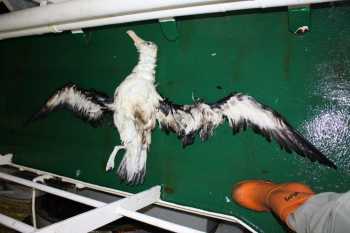Tangi le Bot (Centre d’ Écologie Fonctionnelle et Évolutive, Université de Montpellier, France) and colleagues have published open access in the ICES Journal of Marine Scienceon compiling a “methodological toolkit” from 501 scientific publications on seabird–fishery interactions.
The paper’s abstract follows:
“Seabirds and fisheries have been interacting from ancient times, sometimes with mutual benefits: Seabirds provided fishermen with visual cues of fish aggregations, and also fed upon food subsids [sic] generated by fishing activities. Yet fisheries and seabirds may also compete for the same resources, and their interactions can lead to additional seabird mortality through accidental bycatch and diminishing fishing efficiency, threatening vulnerable seabird populations. Understanding these complex relationships is essential for conservation strategies, also because it could enhance and ease discussion between stakeholders, towards a common vision for marine ecosystem management. As an aid in this process, we reviewed 510 scientific publications dedicated to seabirds–fisheries interactions, and compiled a methodological toolkit. Methods employed therein serve four main purposes: (i) Implementing distribution overlap analyses, to highlight areas of encounter between seabirds and fisheries (ii) Analysing movement and behavioural patterns using finer-scale information, to characterize interaction types (iii) Investigating individual-scale feeding ecology, to assess fisheries impacts at the scale of bird populations, and (iv) Quantifying the impacts of seabird–fishery interactions on seabird demography and population trends. This latter step allows determining thresholds and tipping points with respect to ecological sustainability. Overall, we stress that forthcoming studies should integrate those multiple approaches, in order to identify and promote best practices towards ecosystem-based fisheries management and ecologically sound marine spatial planning.”

A Black-browed Albatross falls victim to a trawler in the South Atlantic, photograph by Graham Parker
With thanks to Anton Wolfaardt.
Reference:
Le Bot, T., Lescroël, A. & Grémillet, D. 2018. A toolkit to study seabird–fishery interactions. ICES Journal of Marine Science doi:10.1093/icesjms/fsy038.
John Cooper, ACAP Information Officer, 11 April 2018

 English
English  Français
Français  Español
Español